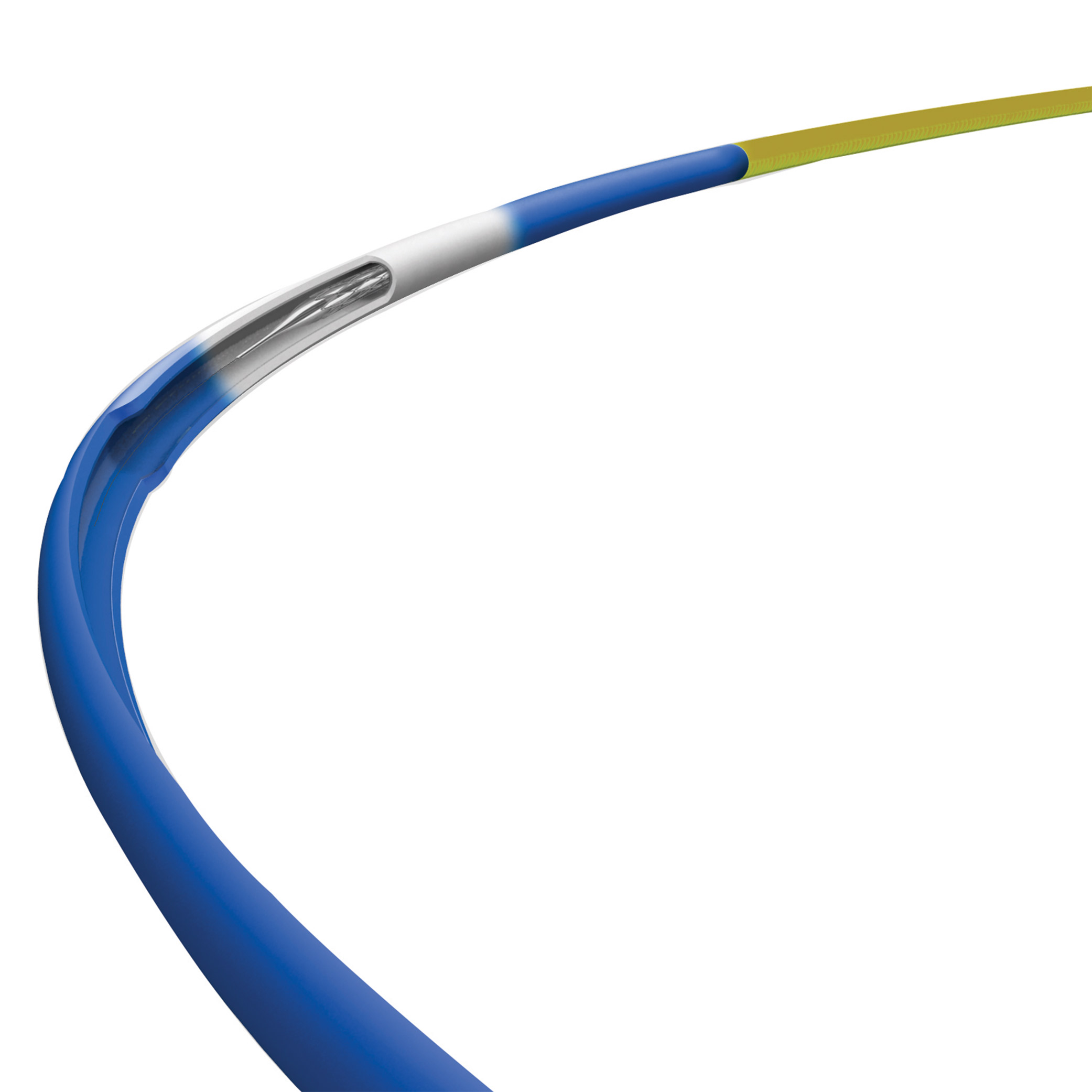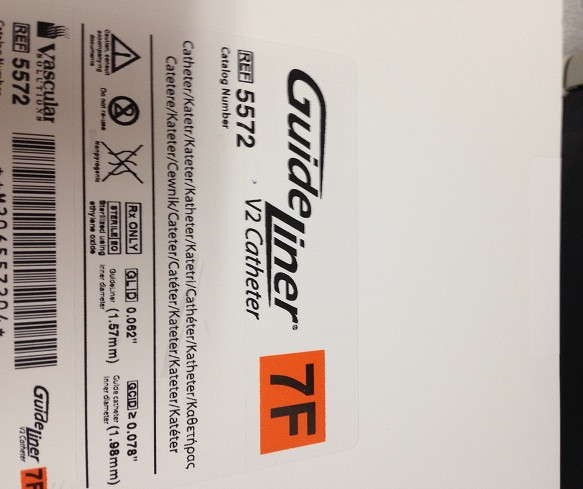
The GuideLiner V2 catheter (Vascular Solutions Inc., Minneapolis, MN, USA) permitted the delivery of three stents in the distal LCx.

Then, the Runthrough guide wire (Terumo, Japan) was able to reach the distal LCx. The latter was carefully inserted into the guide catheter and advanced to the OM, allowing the delivery of the stent (3.5 × 12 mm) to its middle segment ( Figure 3D). At this moment, it was decided to place a “5-in-6” Fr GuideLiner V2 catheter (Vascular Solutions Inc., Minneapolis, MN, USA) in order to improve the support. Balloon predilation was responsible for the deinsertion of the guide catheter from the left main, and stent advancement was not possible ( Figure 3C). The back-up was poor despite the two guide wires into the OM ( Figure 3B), and only non-selective injections were obtained. Laborious thromboaspiration was performed. A runthrough guide wire (Terumo, Japan) was laboriously advanced into the first OM, while a second wire proved impossible to be advanced to the distal LCx ( Figure 3A). A 6-Fr EBU 3.5 (Cordis Co., USA) was engaged in the left main. Intravenous Bivalirudin was administered. Because of the right subclavian tortuosity and poor back-up, a switch to 6-Fr right femoral access was decided. The left anterior descending (LAD) did not show any significant lesion, while the right coronary artery (RCA) was a minor diseased vessel ( Figure 2). Additionally, the distal LCx was diseased with aneurysmal dilation, and the middle segment of the first obtuse marginal (OM) presented a tight stenosis. Coronary angiography through the right radial access was performed, showing a dominant tortuous and calcified left circumflex (LCx) with a tight proximal stenosis, followed by aneurysmal dilation and thrombus. The patient received an intravenous bolus of aspirin (250 mg), loading dose of ticagrelor (180 mg), and primary PCI was indicated. It is available in 4 sizes: 5.5, 6, 7, and 8 Fr.Ī 71-year-old diabetic man was admitted for inferior ST-elevation myocardial infarction, 2 hours after chest pain onset. The more recent GuideLiner V3 catheter has a 25-cm cylinder at the distal tip and a half-pipe design facilitating smooth device entry and delivery ( Figure 1). The GuideLiner V2 catheter provides additional extension of 5 cm and presents all polymer collar for increased flexibility. It consists of a coaxial exchange system joined to a 125-mm compact metal hypotube, and a flexible extension of 20 cm with a radiopaque marker located 2.7 mm from the tip and an inner diameter 1-Fr size smaller than the guiding catheter. The GuideLiner catheter (Vascular Solutions Inc., Minneapolis, MN, USA) is a coaxial “mother and child” catheter mounted on a monorail system extending the guide catheter. We report two didactic cases showing the usefulness of the GuideLiner device in everyday catheterization laboratory practice. 7 - 9 As a “mother and child” system, the GuideLiner catheter (Vascular Solutions Inc., Minneapolis, MN, USA) provides an extension to the guide catheter with a better coaxial alignment and stability. 6 The use of stiffer guide wire, anchoring balloon technique, and deeper intubation of the guide catheter may represent, in some cases, reliable options able to improve back-up support.

Regardless of the clinical setting, a good back-up represents one of the most important conditions to ensure guide wire and balloon advancement and stent delivery, thereby leading to PCI success. Thanks to the development of equipment and techniques, 1, 2 particularly in the wake of chronic total occlusion revascularization, 3 - 5 percutaneous coronary intervention (PCI) has reduced the surgical indications of myocardial revascularization. In both cases, the GuideLiner catheter provided a good back-up insuring the success of PCI and drug-eluting stents implantation, with a good in-hospital outcome. The second case was an elective PCI in a 76-year-old man admitted for stable angina (Canadian Cardiovascular Society class III), related to focal intra-stent restenosis of a saphenous venous graft to the left anterior descending. The first case was a primary percutaneous coronary intervention (PCI) in a 71-year-old diabetic man admitted for inferior ST-elevation myocardial infarction, related to tight proximal stenosis in a dominant tortuous and calcified left circumflex.


As a “mother and child” system, the GuideLiner catheter (Vascular Solutions Inc., Minneapolis, MN, USA) provides an extension to the guide catheter with better coaxial alignment and stability. Regardless of the clinical setting, a good back-up represents one of the most important conditions to ensure guide wire and balloon advancement and stent delivery.


 0 kommentar(er)
0 kommentar(er)
